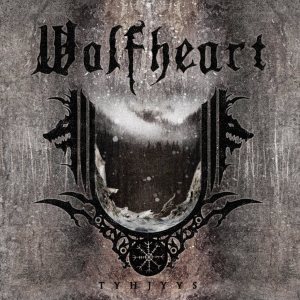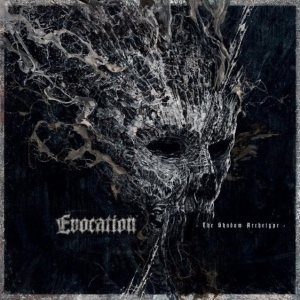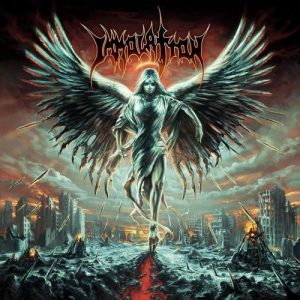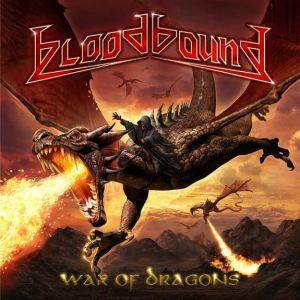 The bounty of spring indeed, because this month I’ve found myself going through at least eight new releases, a few of which aren’t listed in the reviews below but might be up later sometime. Some of these are also late February releases that I had overlooked that month or simply thought were coming out in March (or more accurately, I didn’t get around to listening to until recently). There’s a lot to get to and I’ve tried to keep things short and concise for you and me both, so we’ll apply that to this preamble too. Begin!
The bounty of spring indeed, because this month I’ve found myself going through at least eight new releases, a few of which aren’t listed in the reviews below but might be up later sometime. Some of these are also late February releases that I had overlooked that month or simply thought were coming out in March (or more accurately, I didn’t get around to listening to until recently). There’s a lot to get to and I’ve tried to keep things short and concise for you and me both, so we’ll apply that to this preamble too. Begin!
 Wolfheart – Tyhjyys:
Wolfheart – Tyhjyys:
On the latest episode of the MSRcast, listen to my cohost Cary and I collectively slap our foreheads in bafflement at not knowing that Wolfheart was the newest project from Tuomas Saukkonen. I did have vague stirrings that I had remembered the band name somewhere, but laziness compelled me not to do a simple Google search on it (or I got distracted by Twitter, both likely culprits). Saukkonen is the restless spirit behind Black Sun Aeon (an MSRcast favorite), Before the Dawn, Dawn of Solace, and the short lived RoutaSielu melo-death project. He’s the Chris Black type (he of High Spirits, Dawnbringer, and Pharaoh fame), the kind of musician who operates under a project/band name until he feels its run its course, upon which he creates a new moniker, and begins to record under that for however long he feels its inspiration. These projects have been different enough musically to warrant such divisions, though they are almost always cooked up in a Finnish broth of blackened doom along with melodic death metal structures. Whereas Black Sun Aeon was a very Finnish extreme take on gothic metal, Saukkonen leans in an altogether new direction here, more towards the progressive simplicity of latter day Enslaved. Its a natural fit because one of his trademarks is his clever and engaging use of minimalism as a guide in his songwriting, allowing for the usage of empty space to create tension and to amplify heavier passages.
Case in point is the single “The Flood”, an acoustic led epic that recalls mid-period Opeth for its delicate patterns and understated minor key melodicism. I love a track that’s so confident in its overall strength that it allows for moments of sparsely adorned quietude where the drums are the dominating instrument, helped by Joonas Kauppinen’s jazz-inflected fills (check 2:04 – 2:26). That aforementioned Enslaved influence can’t help but be heard on a cut like “Boneyard”, whose main riff is a mish-mash of tremolo picking and modern day prog-metal, book ending a chorus that’s elevated by a bed of forceful keyboard atmospherics. Wolfheart’s keyboard usage is multi-faceted, not only serving as quasi-orchestral arrangements at times, but as purposefully artificial in tone as on “The Rift”, to conjure up a complementary melody to the rhythm guitar riff that brings to mind Omnium Gatherum and Insomnium (not bad touchstones to have). Unlike those fellow Finnish artists however, who occasionally swim in tones that can be described as warm, or summery (as in the honeyed melodies of One For Sorrow), Wolfheart choose to work with decidedly wintry sounds. That’s not a bad thing because they have the songwriting chops to keep it interesting, but for folks who can’t handle an overload of that stuff, it could act as a stumbling block. That being said there’s not a weak track on this album, and with only seven songs (excluding one rather well written instrumental intro) they could hardly afford one.
The Takeaway: Modern day Enslaved meets Blackwater era Opeth while being bear hugged by Metallica-esque accessibility. Worth a shot for extreme metal neophytes and old hands alike.
 Evocation – The Shadow Archetype:
Evocation – The Shadow Archetype:
Evocation aren’t exactly the most known name in death metal, despite existing in some spirit or another since 1991(!). There were demos and more demos in those early days, then a sudden implosion that halted any activity for years upon years. This halt in momentum prevented their ascent to the region defining status of their fellow Swedish death metal peers in Entombed, Dismember, Grave, and Unleashed. They eventually returned in 2007 with their long overdue debut album Tales From the Tomb, and went on to release three more between then and 2012. They were largely built upon that expected SDM template of buzzsaw guitars and dirty riffs, albeit with hellish vocals caught between a melo-death scream and something far more guttural. Eschewing any guest appearance by the cookie monster, Evocation presented a far more accessible take on this style of death metal, something later co-opted by Grave on their excellent Endless Procession of Souls. But its been five years since then, and while that gap of time might have frustrated anyone who felt like the band was a bit on a roll, those were four relatively uneven albums, with 2010’s Apocalypse being the only one I ever go back to. So I’m happy to report that the break has been beneficial for Evocation, with The Shadow Archetype easily being the best, most confident album of their career. If there’s any justice in the metal world, everyone will recognize this and perhaps even those in the non-metal worlds will give it the Gorguts Colored Sands treatment.
This is an addictive, refreshingly simple and direct re-imagining of the Evocation sound, a distillation of the band’s strengths into a cohesive, brutally effective death metal tonic. The sonics here are deep, raw, and dirty yet recorded with unbelievably wide dynamic range and instrument separation —- take the opener “Condemned to the Grave”, where ominous lead guitar motifs cleanly glide over riffs that hit you with the force of a monster truck smashing over junkyard cars. If you’re getting hints of At the Gates and The Haunted at moments, such as on “Modus Operandi”, you’re not hearing things. I suspect that the band deliberately kept reinforced the Gothenburg influence they’d picked up through the years and use it as a way to explore further melodicism within their traditionally straight ahead Swedish death metal approach (“Survival of the Sickest” being a prime example of the latter). This helps to explain the acoustic instrumental “Blind Obedience“, the most Gothenburg/Jesper Stromblad-ian thing they’ve ever attempted. I can’t pick a favorite track here, because this is a flawless album from start to finish, but I’ll give a special nod to “Children of Stone” for its mix of complex songwriting and structure held in check by ferocious guitar riffs that practically slam their way into action during transitions from verse to chorus and back again. What a song, what an album.
The Takeaway: A must listen to for 2017, one of the early contenders for the album of the year list.
 Immolation – Atonement:
Immolation – Atonement:
Immolation have always been a unique specimen among modern American death metal bands, and to be more precise, from their hometown New York death metal scene at that. They certainly don’t sound like any of the NYDM bands I’ve heard, especially not the ones approved by those few dudes at local death metal shows around Houston and Texas in general sporting those silly NYDM brotherhood patches on their ripped jean jacket vests. I’ve idly wondered if those guys would consider Immolation false metal based on how far they stick out from other bands from the region (transcended more like), but never had a real inclination to strike up a conversation with any of them. Probably for the better. I don’t think I’ve ever discussed Immolation on the blog before because I didn’t actually pen a review for 2013’s Kingdom of Conspiracy, feeling a little blah about that album in general (I’ll be revisiting it soon to see if that’s changed); but I was a huge fan of their 2010 masterpiece, Majesty and Decay. That’s in my top five death metal albums of all time, an astonishing album of brutal death metal that was more oppressive in spirit than in overwhelming walls of sound, a key to its success. It would always be a difficult benchmark to top, and I wonder if that’s something that was on the band’s collective conscience this time around, four years after Kingdom of Conspiracy.
On Atonement, the first thing I noticed before playing the album was the cover art, purposefully more colorful and vivid than their past three releases (including the 2011 Scion A/V presents Providence EP), as well as the reintroduction of their old school logo. I went in expecting some reversion to an older school sound, bracing to hear evidence of the band I once enjoyed purposefully packed away from sight and sound. That turns out to not be the case, and I’m at a loss to explain the cosmetic changes surrounding the album because Atonement is still Immolation fully engaged in their modern mode. That is, death metal written with intelligence, thought, and attention to detail. There’s still an oppressive atmosphere pervading everything, but the instrumentation is still clearly defined, with space and breathing room allowed for everything even during the most intense and hectic passages. A true highlight here is “The Power of Gods”, which features a cleverly written ascending scale pattern that both serves as a hook and a motif at the same time. Equally impressive is the title track, with its deft intro riff pattern repeated throughout as a moving anchor tethering strains of furious, roiling chaotic noise in all directions. There’s musical curiosities as well, such as the bizarre guitar figures that adorn “Thrown to the Fire”, almost treading into non-sludgy sludge-doom territory (if that makes any sense!). Vocalist Ross Dolan is on fine form throughout, but he always is, an ageless wonder in the world of brutal death metal, of particular note is his menacing energy on “When the Jackals Come”, delivering its eponymous lyrics with enough clarity so there’s no mistaking his meaning. Yikes.
The Takeaway: A return to form, if not a confusing way to go about it. No its not as awesome as Majesty and Decay, but few albums are… if you’re new to the band, I highly recommend starting there and then moving to this.
 Bloodbound – War of Dragons:
Bloodbound – War of Dragons:
I’ve never been able to get my head around Bloodbound, mostly because they can’t seem to do the same themselves, so thoroughly schizophrenic have they been over the course of their career. So here’s where I have to use caution, because I do love that a band like Bloodbound exists because its 2017 and we need all the new blood (no pun!) we can get to keep this beloved subgenre going. But good grief, they’ve really taken a turn for the worse here and have succumbed to a rather disheartening recent trend within power metal to amplify the style’s most egregious tendencies to the max. I’m thinking about those purposefully silly bands like Gloryhammer and Twilight Force, because there’s no way songs titled “Tears of a Dragonheart” and “Dragons are Forever” can be excused as anything else. I’m not anti-dragon, but that’s just goddamned silly (edit – this might be the most ridiculous sentence I’ve ever written). Are you kidding me with this stuff Bloodbound? I guess I shouldn’t be too surprised, because as alluded to above, these guys have been all over the place stylistically and thematically since their debut album. Yet the lineup on War of Dragons is still three-fifths of the band that recorded the truly inspired Tabula Rasa…so what happened?
Well line-up changes happened first of all, with the 2010 exit of vocalist Urban Breed bringing in current vocalist Patrik Selleby. Lost in that transition was not only Breed’s rather unique aggressive mid-range vocal approach, but his innate talent as a songwriter, writing his own lyrics and vocal melodies during his time in Tad Morose and bringing that talent to his two Bloodbound albums as well. Selleby is a far more conventional power metal voice, a good one at that with an impressive upper register, but he’s far more dependent on predictable power metal vocal patterns. Its hard to figure out if he’s the reason for the band’s increasingly simplified songwriting formula over the course of these past three albums but I’d equally point the finger at Bloodbounds three remaining original members. As a forgiving power metal fan, I can’t shake the feeling that these guys are looking for a straight shot to the most accessibility the subgenre can provide, and that means following whatever route that currently seems to be working for others. Only that can explain the increase in Gloryhammer-esque hamminess that characterizes War of Dragons on a lyrical level, and also the co-opting of Sabaton styled keyboard lines that mirror the vocal melody. That works for Sabaton because its part of their organic, original sound —- and the hamminess works for Gloryhammer because of their overall package. Bloodbound has no identity of their own anymore, and maybe the loss of Breed’s signature lyrical depth and intelligent vocal melody design on Tabulsa Rasa suggests they never did.
The Takeaway: The McDonalds of power metal then.
 Mors Principium Est – Embers of a Dying World:
Mors Principium Est – Embers of a Dying World:
The lesser noticed little brother of Finnish melodic death metal (relative to Insomnium and Omnium Gatherum that is), Mors Principium Est are now on album number six, which is not remarkable in its own right except to suggest that they’ve had plenty of time to direct their sound in a more focused, organic direction. That actually is the feeling I’ve gotten from Embers of a Dying World, that the band is still in love with the Gothenburg template (nothing inherently wrong with that), but has this time around stumbled upon a way to incorporate more of a Finnish approach to their melo-death. That doesn’t mean they’re copying their brothers, but this is the most noticeably different sounding album in their discography, owing to Gothic-tinged keyboard arrangements, mournful melodies set to slower tempos in places, as well as the surprising inclusion of an actual ballad here in “Death Is The Beginning”. Its a bold experiment, one that I’m surprised they haven’t tried earlier, and here they include female vocals for the first time that I can remember, and it works really well. Check out “The Drowning” for a vivid example of just how much the band is stretching into unfamiliar territory —- a slightly below mid-tempo synth groove with Queensryche meets melo-death lead guitar drapery with playfully subtle tempo accelerations in the glide-in and out of its addictive chorus. This isn’t the Mors we once knew, yet they still sound like themselves, a challenge for any band to achieve.
This expansion of their palette I believe is a direct result of guitarist Andy Gillion’s gradually increasing songwriting influence since he joined up in 2011. His first two albums with the band displayed flashes of this transforming influence, but here he fully blossoms, and it seems that longtime vocalist Ville Viljanen and bassist Teemu Heinola are happy to let him take most of the songwriting reins. Its an odd quirk that its taken a British guitarist to coax out more of a Finnish sound from Mors, but Gillion brings a brashness, a boldness that the band has needed both musically and personality wise. Case in point, check out his tour diary for the band’s stay on this year’s 70000 Tons cruise; he’s an outgoing, upbeat, and playful personality. This is all just idle speculation, but he seems to have loosened up the band in general, and I can hear this affect Viljanen on Embers more than anyone, his performances here are the best of his career. He’s been one of the best melo-death voices for a long time, possessing that perfect condensed scream-growl vocal, but on new songs like “Apprentice of Death” and “Into the Dark”, he tries new approaches, invoking more of a blackened Satyr vibe. Its a subtle change, but it suits him and helps those two songs breathe. The whole band is breathing easier on Embers in fact, this is one of the nicer surprises this year.
The Takeaway: This may be up for vicious debate, but this is certainly my favorite Mors Principium Est album, so full of unexpected twists and turns yet not sounding like they’ve transformed into anyone else.
